One of the largest vessels operated by the Ministry of Defence, the Royal Fleet Auxiliary’s Fort Victoria, has returned to sea following a dry-docking period at Cammell Laird in Birkenhead.
According to Cammell Laird, the vessel has undergone a 30-year special survey on the supply ship that plays a key role at the forefront of Royal Navy operations.
RFA Fort Victoria sailed from Cammell Laird’s non-tidal wet basin bound for Loch Striven in Scotland in January, having undergone a major programme of work carried out under a 10-year Through Life Support contract awarded to the marine engineering services provider in 2018.
Key aspects of the ship’s 30-year special survey included inspections and maintenance of RFA Fort Victoria’s main engines, propulsion systems and steering equipment. All of the ship’s side valves, more than 230, were also inspected and serviced. The vessel’s ballast valve operation remote control was upgraded, along with its stores and Replenishment at Sea (RAS) cranes. A full tank survey was carried out and a new hangar crane installed.
The latest work followed a two-phase life extension programme completed by Cammell Laird in 2018, designed to keep RFA Fort Victoria in service.
John Kennedy, MoD Programme Director at Cammell Laird, said:
“Merseyside is once again a major hub for shipbuilding, ship repair, conversions and refits, and we’re only too pleased to be using our world-class skills and facilities to support the RFA Flotilla. During the past decade we have established a strong relationship with the RFA and built up considerable expertise. The workforce’s in-depth knowledge of RFA Fort Victoria is invaluable – it allows us to strive for continuous improvement, provide value for money for UK taxpayers and maximise the availability of these ships for the RFA.”
During her time in dry dock, RFA Fort Victoria’s port and starboard propellers, propeller shafts, inner and outer stern seals, all intermediate shafts, shaft couplings and bearing blocks were unshipped from their normal working positions and presented to the class surveyor before being refitted. The ship’s propulsion line gearboxes were inspected at the same time, which in turn allowed engineers to inspect and renew major items on both clutches, and refurbish two shaft brakes.
In addition, the ship’s lifeboats and lifeboat davits were put through a programme of testing and maintenance, while steelwork surveys and repairs were carried out in one of the ship’s lift shafts.



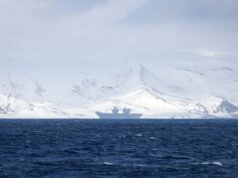
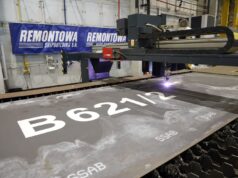
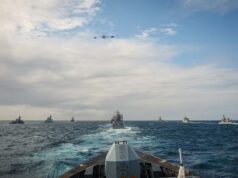


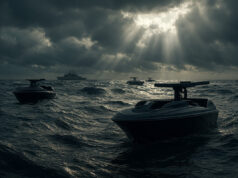
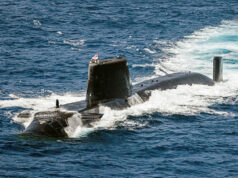

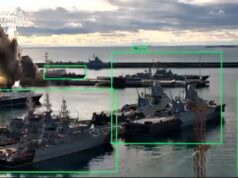
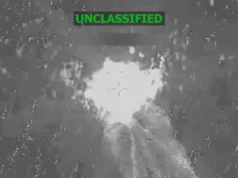

Half the USN’s Supply class Fast Replenishment ships remain decommed. They’re the only ones that run with a CSG and supply it with everything from fuel to solid stores. Built to military standards too. The MSC fleet is very vulnerable and it’s going to be targeted by the PLAN. Without them USN operations grind to a halt. Which means that we’ll have to expend very scarce resources to escort them in the theater. “Logistics wins the war”, hopefully we don’t relearn that the hard way.
Cheers
Yup, I remember reading sometime ago now about the USN supply chain in the Pacific Theatre during WW2 – huge… I can’t remember the numbers for that particular effort but recently I read or watched a programme (quite a few for the recent anniversaries) that stated that something like 80% of allied troops involved in the campaign from Normany to the Elbe where in the supply chain. I am not sure if that is entirely true, but the supply lines were very, very long time the time they gor to the Elbe. Go for mechanisation and there is a support overhead to be met.
Too few of todays politicians understand that, because they have never been there. Last of the politicians who had fought in WW2 in the UK retired in the late ’70s early ’80s. Our current Secretary of State for Defence is an ex-soldier so may well have been in harms way, but not our Prime Minister, and there is only so much one person can do…
That looks like a pretty comprehensive RESM kit on the main mast.
Shame fort geogre was scrapped! But I’m glad this big girl has life left in he4, let’s hope we get the three new replacements.
Good to see the ‘old girl’ back in the fleet. We could do with a few more like her, pity that the government with their short sighted cost savings scrapped her sister.
MOD can be a virus when the scrap ships for no good reason.
I am afraid to say (from bitter experience) that dragging ships to 30 year renewal surveys is not an efficient way of managing your OPEX or CAPEX. It is a false hope of accountants and finance people and always tempered by the disappointment of ”emergent work”, ”unexpected” failures, non availability of parts, obsolescence and stressing people out in dry dockings and refits as paper based assumptions fold and crumple like so much pitted steel, lowering morale of operations people as they soldier on with kit that is out of date and ready to fail at any moment, crap accommodation standards, hygiene standards etc etc.
Just scrap it and build a new one. It will save you money in the long term, keep people interested, generate jobs and build supply chains, give you better kit to be able to deliver better results – I guarantee it.
Does this ship have anti-ship missiles?
In all seriousness these types of ships might not be very sexy but they do a vital job.
It’s not a stupid question. The USN recently have investigated turning some of their supply ships into TLAM, AAW missile carriers controlled by CEC from an Arliegh Burke or Ticonderoga.
Great idea, imagine a cruise ship size with a thousand missiles.
No they don’t have anti any5h8ng missiles. Lucky if they have fireworks. But I’m sure phalanx will be fitted for the carrier battle group work up.
Ironically, as they were originally envisaged as supporting T23’s hunting subs in the GIUK gap, and as a planned class of 6, they were to have Seawolf VLS.
The 2 built got the VLS, but I don’t think any missiles have ever been in them.
Does anyone know if they been removed with refit or are they still there?
Looking at hundreds of photos it looks like they were never installed. The launchers were there but the guidance radars were never fitted. It looks like the CIWS that is fitted above the bridge took the space for the Sea Wolf guidance radar. I don’t know what radar system Fort Victoria now has but it is possible that the installation of Sea Ceptor might be much more simple. The space still seems to be there midships.
Overall a good ship well designed and could defend herself if the government was to have spent a bit more, with 32 Sea Wolfs, or 32 Sea Ceptors it would give an attacking aircraft a bad day at the office. Only a pity that we did not develop the design further.
Does anyone know if the new Tides can take Sea Ceptor or if there is a Sea Ceptor light weight that can be bolted on, for example six launchers attached to the CIWS or 6-8-12 launchers on a Typhoon station.
Yes they have Harpoon, probably some Sea ceptor and Aster. They also have Sting Ray. Lots of 4.5, 30mm, 50 cal, 20mm.
Trouble is that its all in the hold and most of it cannot be used.